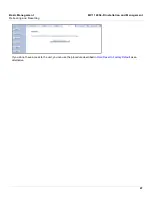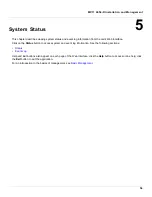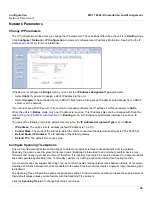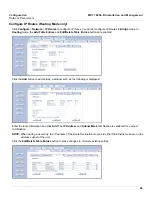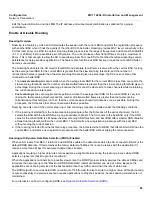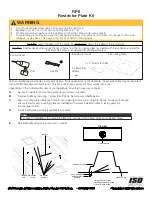
Configuration
MP.11 4954-R Installation and Management
System Parameters
58
You can enter the following details:
•
System Name:
This is the system name for easy identification of the BSU or SU. The System Name field is limited to
a length of 32 bytes. Use the system name of a BSU to configure the Base Station System Name parameter on an SU
if you want the SU to register only with this BSU. If the Base Station System Name is left blank on the SU, it can
register with any Base Station that has a matching Network Name and Network Secret.
•
Country:
Displays the country of operation.
•
Location:
This field can be used to describe the location of the unit, for example “Main Lobby.”
•
Contact Name
,
Contact Email
, and
Contact Phone:
In these fields, you can enter the details of the person to
contact.
•
Mode of Operation:
This field sets the unit as
bridge
(layer 2) or as
router
(layer 3). See
Bridge and Routing Modes
for more information.
•
Temperature Logging Interval:
This field sets the interval at which unit temperature is logged.
The static fields on this window are described as follows:
•
ObjectID:
This field shows the OID of the product name in the MIB.
•
Ethernet MAC Address:
The MAC address of the Ethernet interface of the device.
•
Descriptor:
Shows the product name and firmware build version.
•
Up Time:
The length of time the device has been up and running since the last reboot.
Bridge and Routing Modes
Bridge Mode
A bridge is a product that connects a local area network (LAN) to another local area network that uses the same protocol
(for example, Ethernet). You can envision a bridge as being a device that decides whether a message from you to
someone else is going to the local area network in your building or to someone on the local area network in the building
across the street. A bridge examines each message on a LAN, passing those known to be within the same LAN, and
forwarding those known to be on the other interconnected LAN (or LANs).
In bridging networks, computer or node addresses have no specific relationship to location. For this reason, messages
are sent out to every address on the network and accepted only by the intended destination node. Bridges learn which




